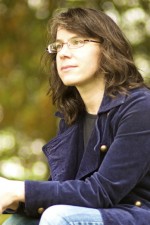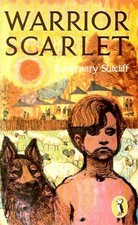Writers Write: My Favourite Book 22
Nansi Kunze
I think I must have been ten when I began to read Rosemary Sutcliff’s books. It was a strange time for me – a confusing and somewhat lonely one. My parents had split up, and we had gone back to England, leaving my friends, my school and the various treasures a ten-year-old deems precious behind in Australia.
We went to live with my grandparents. Retired academics, they were full of wondrous knowledge which they delighted in sharing – and one of the richest veins of their learning was history. Certainly it was they who introduced me to Jane Austen, even taking me to The Pump Room in Bath to ‘take the waters’, as the upper classes did in the Regency Period (I remember finding the style absolutely enchanting, but the waters somewhat nauseating). And I believe it was my grandparents who gave me a copy of The Eagle of the Ninth, Rosemary Sutcliff’s most famous novel, a few months into our stay with them.
It was awe-inspiring. I’d visited many a Roman ruin by that stage and been fascinated by them, but Sutcliff made those long-gone inhabitants real. Not in the faintly anachronistic way I’d experienced with other children’s books about the past – the ones where the characters seemed like people I could meet in the here and now – but with a strong, evocative prose that brought me into their world. I devoured every book of Sutcliff’s I could find, loving each of them and living each of the historical periods she wrote about. One book in particular, however, gripped me even more than the others.
Warrior Scarlet is set in Bronze Age Britain, and from the moment I opened it I saw that world. It wasn’t until I studied ancient history at university, I think, that I realised Sutcliff couldn’t have known very much about what life on the Downs some 3,000 years ago was really like. She’d managed to take what little remains of the Bronze Age peoples’ cultures – knives and potsherds, brooches and burial mounds – and use it to regenerate the men, women and children who lived then. Even the dialogue was utterly believable, employing unusual grammatical structures and idioms to give the impression of a language with a very different basis than our own. Sutcliff’s writing, devoid of sentimentality yet deeply emotive, delivered some of the most vivid imagery I had ever encountered … and more than a quarter of a century later, that still holds true.
Warrior Scarlet is filled with characters who don’t fit in: Drem, the boy who grows up expecting to gain his warrior status despite not having the use of his right arm; the indigenous people who, having been conquered by Drem’s kind, now serve as their shepherds; Blai, who was left with Drem’s family after her mother died in childbirth and waits in vain for her father to come and reclaim her. It’s a story of loneliness and aching confusion, and of discovering that the things you take for granted in your world can be ripped away without warning … all of which resonated with me at that time in my life. But it’s also a story about reassessing and finding new paths, and about discovering the other people around you who are out of place too.
Reading Warrior Scarlet now, as an adult and a writer, is still a breathtaking experience – although it does spark the occasional twinge of envy in me. Reaching thousands of years into the past and bringing a world back, apparently undisturbed, to tell your story with? Now that’s a skill I wish I had.
Nansi’s latest book is ‘Dangerously Placed’ (Random House Australia 2011). For more, see Nansi’s website .


It’s so much fun reading about reading! This was really interesting.